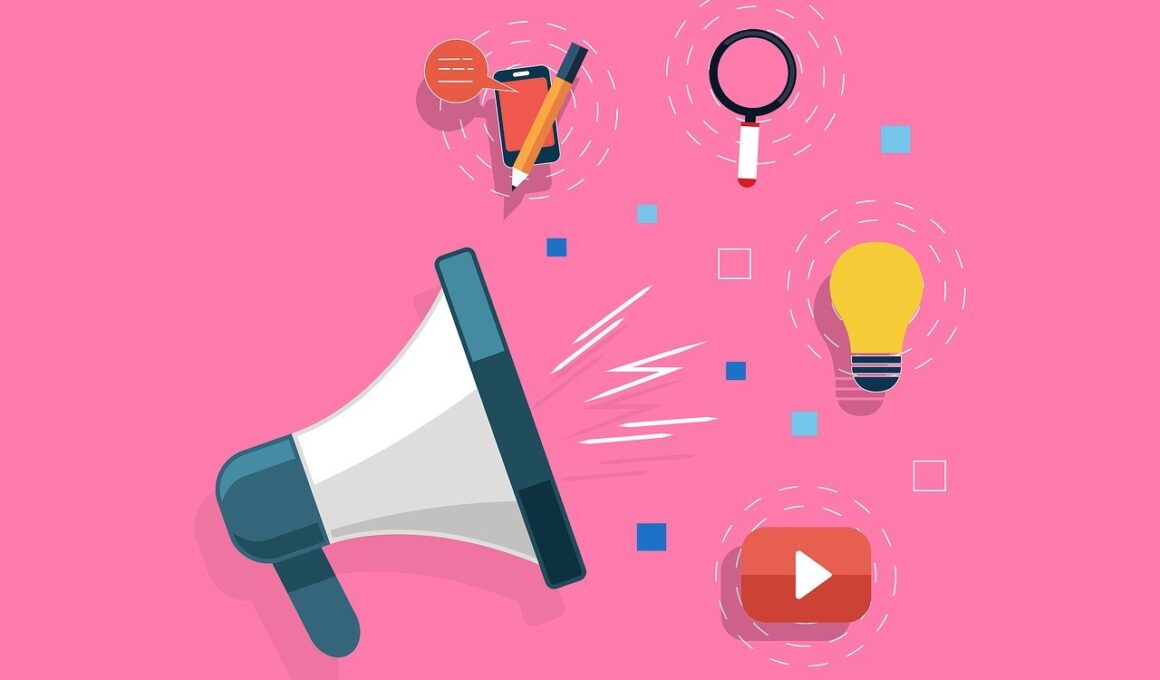Timing Your Social Media Posts for Maximum Engagement
Social media has become an indispensable tool for event planners aiming to maximize their event’s visibility and engagement. The timing of your social media posts is crucial in ensuring that your target audience sees and interacts with your content. Each platform has its own optimal posting times based on user activity and engagement levels. It is essential to analyze your specific audience demographics and their online habits to determine when to share your content. Consider creating a content calendar that outlines the timing of your posts. Tools such as Hootsuite or Buffer can help you schedule posts effectively across various platforms. Engaging with followers during peak times increases the likelihood of sharing your posts and extends your reach. In addition, be sure to mix up your content types during these optimal times—images, videos, and polls can all boost user interaction. Moreover, keep an eye on trending topics and events, using them to your advantage to create timely posts that resonate with your audience. By mastering the art of timing your posts, you will significantly enhance your event’s reach, engagement, and overall success.
Understanding your audience’s behavior is a crucial step in determining the best times to post on social media. Monitoring analytics through platforms like Facebook Insights or Instagram Analytics lets you gauge when your followers are online. These insights will enable you to tailor your posting schedule based on actual data rather than guesswork. Use this data to identify trends in engagement levels relative to specific days or times. Additionally, keep in mind that different social media platforms attract various segments of audiences. For instance, LinkedIn is often more active during professional working hours, whereas Instagram may see increased activity during evenings or weekends. Testing various posting times can also yield valuable insights. Consider running a series of timed tests where you post similar content at different times to see when you receive the most reactions. Over time, you’ll uncover your own unique rhythm that best suits your event and audience. In conjunction with consistency, pay attention to varying engagement formats. Mix promotional posts with informational ones to maintain interest while captivating your audience’s attention effectively.
Leveraging Event Themes for Posting Strategies
The theme of your event can influence the timing and type of content you post on social media. Identify key moments in your event schedule that can serve as excellent posting opportunities. For example, if your event features notable speakers or performers, consider posting reminders and teasers leading up to these highlights. This method not only builds anticipation but also increases engagement as audiences look forward to those moments. Likewise, consider live-posting during the event to provide real-time updates, which can heighten interest among those unable to attend. Sharing behind-the-scenes content can also enhance the connection with your audience. Whether it’s preparation highlights or sneak peeks of what’s to come, these posts allow followers to feel involved. Create countdown posts that remind people of impending deadlines, such as ticket sales or registration closures. Engaging designs and strong calls-to-action will motivate your audience to act. Furthermore, ensure that your visual content is compelling; high-quality images or videos will captivate your audience and encourage them to share your posts, expanding your reach organically.
Consistency is key when timing your social media posts. Develop a routine to maintain a steady stream of content that keeps your audience engaged. Regular posting helps build momentum, establishing familiarity and reliability among your followers. Utilizing a mix of scheduled and spontaneous posts can enhance authenticity, making your account appear more dynamic. It is essential to keep your audience updated with event-related content regularly. Announce your event’s highlights and updates in a timely fashion to maintain interest. In addition, consider employing strategies such as reminders and engaging polls to solicit audience feedback at various stages leading up to the event. These techniques not only enhance interactivity but also ensure that your audience remains invested in attending. Follow up after the event with thank you posts and feedback requests, promoting community engagement and building connections. This step demonstrates appreciation and encourages future participation. Lastly, leverage user-generated content by reposting attendees’ experiences through your social media channels. This boosts credibility and demonstrates how your events make an impact while keeping your audience engaged moving forward.
Utilizing Tools for Optimal Posting
Utilizing various social media management tools can streamline your posting process while ensuring that you effectively time your content. These tools often provide insights and analytics that can help refine your posting strategy. Popular options such as Sprout Social and Later offer advanced features that help gather audience insights and competitive data. These insights often indicate the best times to post based on follower activity, ensuring that you’re maximizing engagement opportunities. Additionally, integrating automation can alleviate the pressure of manually posting in real-time. Pre-scheduling posts utilizing platforms can help you maintain a consistent flow of content without exhaustion. This strategy allows you to focus more on the event’s execution and audience interaction during peak times. Moreover, consider setting reminders or alerts for when your audience is most engaged to encourage spontaneous interactions. Crafting engaging posts in advance also allows for ample time to ensure high quality and relevance. The use of efficient tools can also help free up more time for interaction—responding to comments and messages in real-time can enhance relationships with your audience.
As an event planner, engaging with your audience during peak times maximizes the effectiveness of your social media strategy. Research suggests that certain times of day, based on when users are most active, typically yield higher engagement rates. For example, research indicates that weekdays from late morning to early afternoon may generate optimal results, as users often check their feeds during breaks. Try various formats during these times: use eye-catching visuals, quick videos, or interactive posts to foster engagement. It’s essential to remember that engagement isn’t solely about when you post, but also how you genuinely communicate with your audience. Building meaningful relationships encourages followers to share content and invite others to participate in your events. Consider prioritizing ways to enhance relational connections beyond just broadcasting your messages. Host Q&A sessions or live chats focused on upcoming events, thereby bridging gaps between yourself and followers. This type of interaction fosters community and enthusiasm, increasing your overall visibility. The essence of social media lies within building connections, making interactive strategies integral to your success in the event planning arena.
Analyzing Post-Event Engagement
After the event concludes, analyzing your social media engagement is key to understanding the effectiveness of your post-timing strategies. Reviewing analytics from each major platform will provide valuable insights into what worked best and what can be improved. Look at metrics such as reach, likes, comments, and shares to assess how your audience interacted with your content. Pay attention to trends that reveal peak interaction times throughout the event. This analysis can help refine your approaches for future events. Assessing engagement can highlight successful strategies worth repeating, or if any content posted at less optimal times should be re-evaluated. Furthermore, sharing recap posts that summarize event highs can keep the conversation going long after the event ends. Encourage attendees to share their experiences and tag your event’s account. This user-generated content can help increase visibility while further engaging your audience. Lastly, consider sending post-event surveys via social media to gauge attendee satisfaction and gather feedback. Understanding your audience’s experiences deeply can only improve your future event planning efforts and serve to enhance future engagements.
Implementing all these strategies on timing your social media posts ensures that your events receive the attention they deserve. Whether you’re planning corporate conventions or themed parties, the key lies in consistently creating relevant and engaging content at the right moments. Emphasize audience engagement through a combination of careful planning and spontaneity, allowing you to adapt to evolving audience needs as you analyze their behaviors and engagement patterns. Utilizing the right tools enables efficient management and timely execution of your social media campaigns while appropriately informing and entertaining your audience. Determine the optimal posting times for your specific events, focusing on customizing your strategy based on demographic insights while maintaining flexibility to embrace new trends. Attending to your audience’s needs ensures that your social media efforts translate into tangible successes. Keep amplifying these relationships through insightful engagement that resonates with your community, nurturing long-term loyalty and interest in your events. Ultimately, mastering the timing of your social media posts will drive growth and foster connection, creating a thriving online environment surrounding your events. Stay creative and adapt your strategies, continuously exploring avenues that can enhance your connections and audience interactions.


